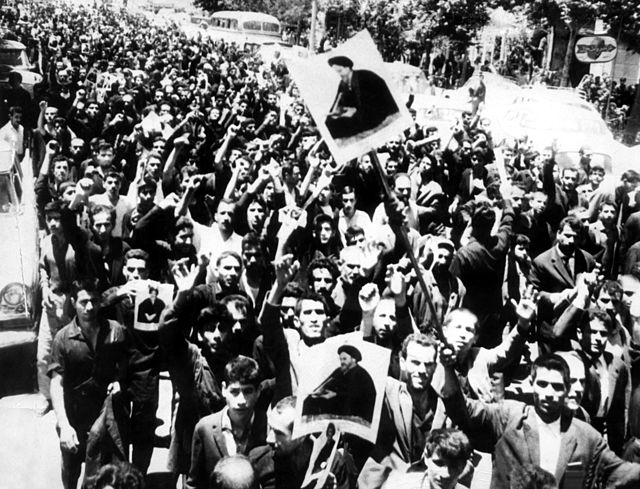The Iranian Revolution, also known as the Islamic Revolution, was a series of events that culminated in the overthrow of the Pahlavi dynasty in 1979. The revolution also led to the replacement of the Imperial State of Iran by the present-day Islamic Republic of Iran, as the monarchical government of Mohammad Reza Pahlavi was superseded by the theocratic government of Ayatollah Ruhollah Khomeini, a religious cleric who had headed one of the rebel factions. The ousting of Pahlavi, the last Shah of Iran, formally marked the end of Iran's historical monarchy.
Mass demonstrations of people protesting against the Shah and the Pahlavi government on the day of Hosseini's Ashura on 11 December 1978 at College Bridge (now Hafez Bridge), Tehran
Shah Mohammad Reza Pahlavi
Ayatollah Sayyid Ruhollah Musavi Khomeini
Residents of Tehran participating in the demonstrations of 5 June 1963 with pictures of Ruhollah Khomeini in their hands
The Pahlavi dynasty is an Iranian royal dynasty that ruled for almost 54 years between 1925 and 1979. The dynasty was founded by Reza Shah Pahlavi, a non-aristocratic Mazanderani soldier in modern times, who took on the name of the Pahlavi language spoken in the pre-Islamic Sasanian Empire to strengthen his nationalist credentials.
Prince Ali-Reza Pahlavi, the heir presumptive until his death in 1954
Image: Reza Shah portrait
Image: Mohammad Reza Pahlavi 1
Image: Shahanshah Aryamehr 2








